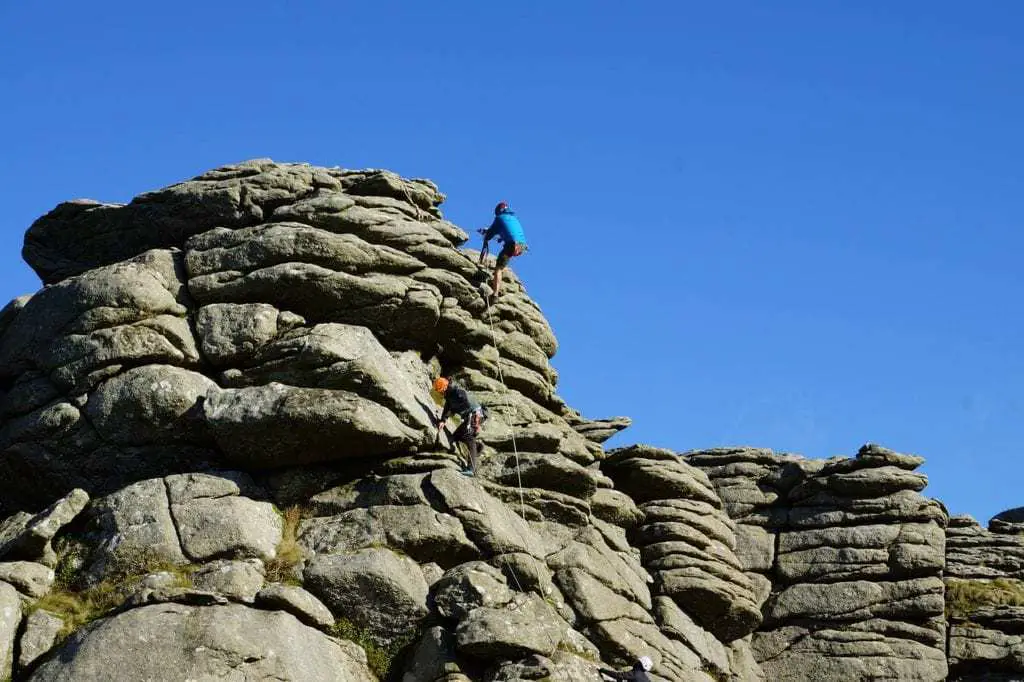
Climbing is an activity that’s practiced all over the world, and because of its popularity there are many different types of climbing that have been invented for different reasons. It’s thought by most people that there are only two or three different types of climbing: lead climbing, bouldering, and mountaineering. There are many more methods of climbing than these, and other different types of climbing activities. Some are quite similar, but some are downright unique. Using the list below, you can choose the type of climbing that most appeals to you. It’s also quite interesting to find out what makes each type of climbing method different from the other.
If you’re looking into getting into rock climbing then you won’t need to worry about most of these climbing types described below. The most common types of climbing are bouldering, top rope climbing, and lead climbing and there are climbing gyms all over the world for each of them. If you’re wondering where to start then pick one of those. Practising at least one of these 3 will lead on to help you with pretty much all of the other types of climbing listed below, barring any that involve ice.
Below I have written a description for each of the 14 different types of climbing and climbing activities there are, and how each one differs from the other 13.
Page Jumps
- Bouldering
- Highballing
- Free-soloing
- Lead Climbing
- Mountaineering
- Sport Climbing
- Traditional Climbing (aka Trad Climbing)
- Top Rope Climbing
- Aid Climbing
- Free Climbing
- Rope Soloing
- Multi Pitch Climbing
- Deep Water Soloing
- Ice Climbing
1. Bouldering
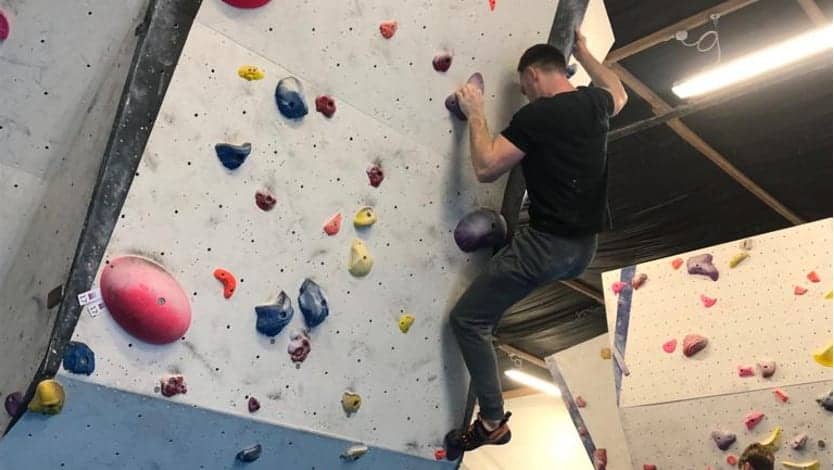
Bouldering is a type of climbing that doesn’t require a rope and is a solo activity. Unlike lead climbing (or similar) there is no one else on the wall helping you through your climb in any way (other than words of encouragement). Duo bouldering problems while fun, are very rare to find.
There are indoor bouldering gyms and outdoor bouldering areas all around the world. The maximum height of your usual bouldering wall is around 4 meters high whereas the average height is usually around 3 meters. Indoor bouldering gyms offer different graded climbs and have a massive safety mat for when a climber falls. Outdoor bouldering will usually require the climber brings crash pads for safety when they fall.
Some shoes are specifically designed for bouldering because of their speciality for short, steep routes, or precision on overhangs. Bouldering is one of the most commonly practised forms of climbing.
Check out this Bouldering 101 article I’ve written which covers this topic in detail.
2. Highballing
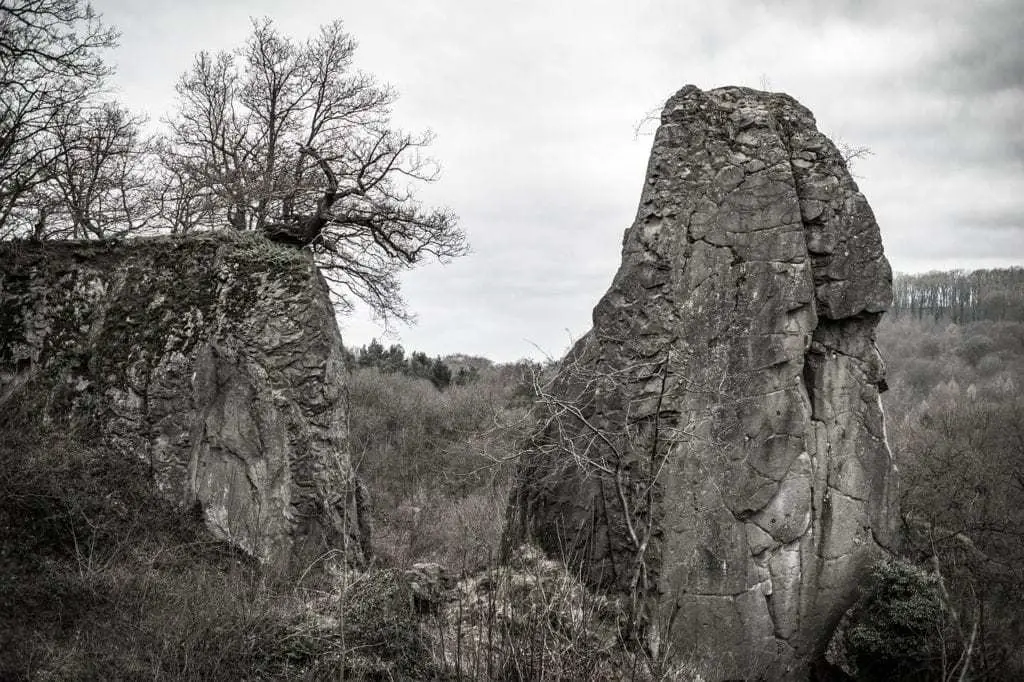
Highballing is exactly the same as bouldering; however it’s a lot more risky due to the fact that the maximum height of a bouldering wall is considered to be around 15 feet (or 4 meters). Climbing a wall or rock that’s between 15 and 40 feet high without a rope is considered highballing.
In some cases, there are artificial highball climbing walls set above a large net or mat, but highball climbing is rare to find unless it’s done on rock. Mats aren’t generally used due to the fact that at a large height they’re pretty much useless. Highballing can be quite dangerous.
3. Free-soloing
As with bouldering and highballing, free-soloing also doesn’t require any ropes and is probably the most dangerous type of climbing. This is backed up by the amount of people who have actually died from free-soloing.
Bouldering turns to free-soloing when the climber is climbing without ropes at a height that’s above 40 feet; either that or it’s a highball climb (between 15 and 40 feet) that’s difficult and therefore more dangerous due to the route used and techniques that have to be administered.
Alex Honnold, probably the most well-known climber in the world, is a free-soloist. He’s set the record for climbing the Bear’s Reach route of Lover’s Leap, a granite cliff in California, in 4 minutes and 15 seconds without using ropes. The Bear’s Reach route on Lover’s Leap is about 400 feet high.
4. Lead Climbing
The requirements of lead climbing come straight from its name. Lead climbing requires a leader to set the route by clipping the rope into bolts and hooks that are set firmly into the wall or rock. Trad climbing gear can also be used in lead climbing which is removable and therefore not fixed into the rock (more on this later). There are different types of lead climbing i.e. sport climbing and trad climbing are both types of lead climbing.
As the leader climbs the route, another person at the bottom of the wall called the belayer, will help feed the rope up. The leader will then clip the rope into the hooks to allow other climbers below him to climb with less risk to their lives. The rope, obviously, stops the climber from falling to his or her death.
5. Mountaineering
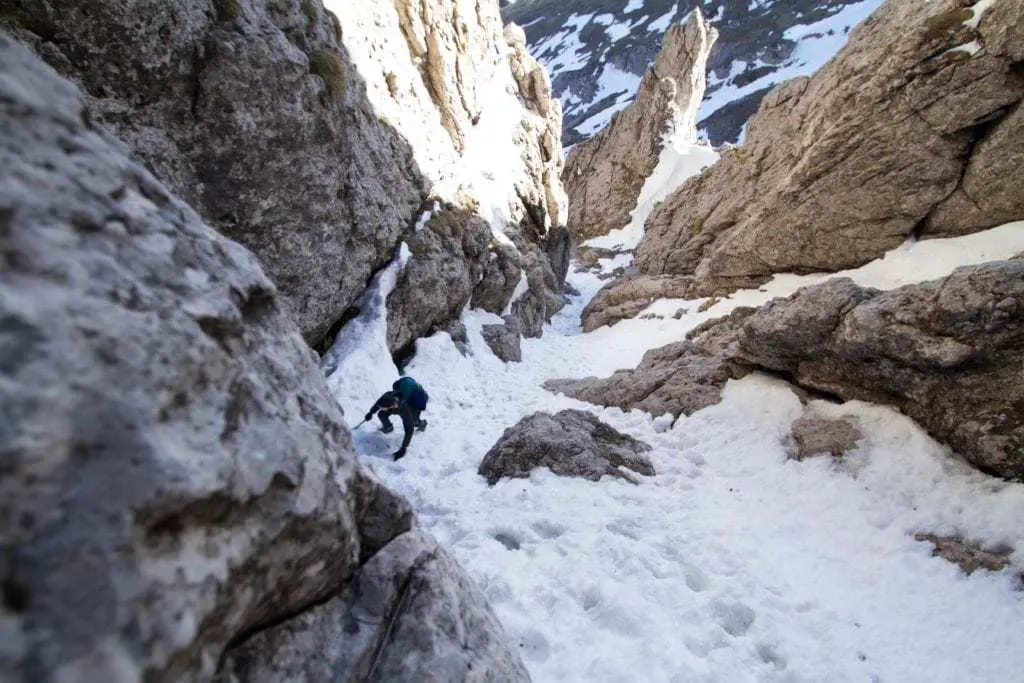
Mountaineering has a few different names – it’s called alpinism in Europe and it’s also referred to as mountain climbing throughout the globe. It’s a little bit similar to hiking, except it’s more physically demanding due to the different techniques that need to be used in certain situations so that you can get through a route safely.
Mountain climbing is often done in a group of people because team work and support is usually a vital factor in safety and progression. It can be an activity that lasts a few hours at a time, or it can be done as an expedition that lasts days, weeks, or even months. To climb Mount Everest, it takes the average human around 2 months to get from the bottom of the mountain and up to the summit.
Mountains give different types of problems due to the different terrains they offer, and the different conditions overall compared to a normal straight up climbing route. While mountaineering, you may stumble across ice, snow, and different types of rock. Because of this, different techniques and technical equipment may need to be used. Ice climbing, scrambling, glacier travel, along with your normal lead climbing and maybe even a bit of bouldering may need to be used to get from one area to another.
Mountaineering is quite dangerous when a climber attempts different challenges. This is due to different characteristics of the terrain that may be discovered: glaciers, rock falls, avalanches, and crevasses all provide different problems. As you proceed higher up a mountain, the air becomes thinner due to the high altitude, and the weather conditions may become more unfriendly.
6. Sport Climbing
Sport climbing is a type of lead climbing. Just as with lead climbing there are fixed bolts with rings into the rock on wall to protect the climber from falling. These bolts and rings will have been set by the leader, and are usually between 10 and 15 feet apart from each other. The climber will use a quickdraw (also known as an extender) to clip the rope attached to them onto the bolt attached to the rock. A quickdraw is two carabiners (a looped, spring-loaded shackle) which are connected by a thick piece of nylon. At the end of the route, a belay anchor will usually be waiting for the climber which has been set by the leader. A belay anchor consists of two or three bolts and rappel rings.
Sometimes sport climbs can be “rap-bolted”. Rap-bolting is a way to bolt into the rock, but instead of bolting as they climb upwards, the leader will bolt as they rappel down the wall.
The goal of sport climbing is to focus on technique, strength, cardiovascular activity, and gymnastics rather than some climbing methods which focus on adventure and risk as their major factors (for example free-soloing and mountaineering).
Many people who start lead climbing are more inclined to go for sport climbing instead of trad climbing due to convenience. Less equipment is needed in sport climbing, there isn’t as much to remember regarding the anchors into the wall, it’s easier than trad climbing but it’s still quite challenging, and it’s more of a workout for the body than the mind.
7. Traditional Climbing (aka Trad Climbing)
As we’ve already said, trad climbing is another type of lead climbing. In traditional climbing, however, the anchors that are set into the wall are removed once the route has been climbed.
Trad climbers need to not only carry quickdraws, but they will also carry other types of equipment to help attach themselves to the wall, such as cams, nuts and hexes. These get jammed into cracks and crevices within the wall. At the end of the route a trad climber will usually have to build their own belay anchor with their own trad climbing equipment. However, some trad climbing routes will have set belay stations with two or three bolts and the rappel rings as discussed in the sport climbing sub-heading.
Trad climbing is never “rap-bolted” – the leader will bolt the fixed anchors from the bottom of the climb up to the top.
8. Top Rope Climbing
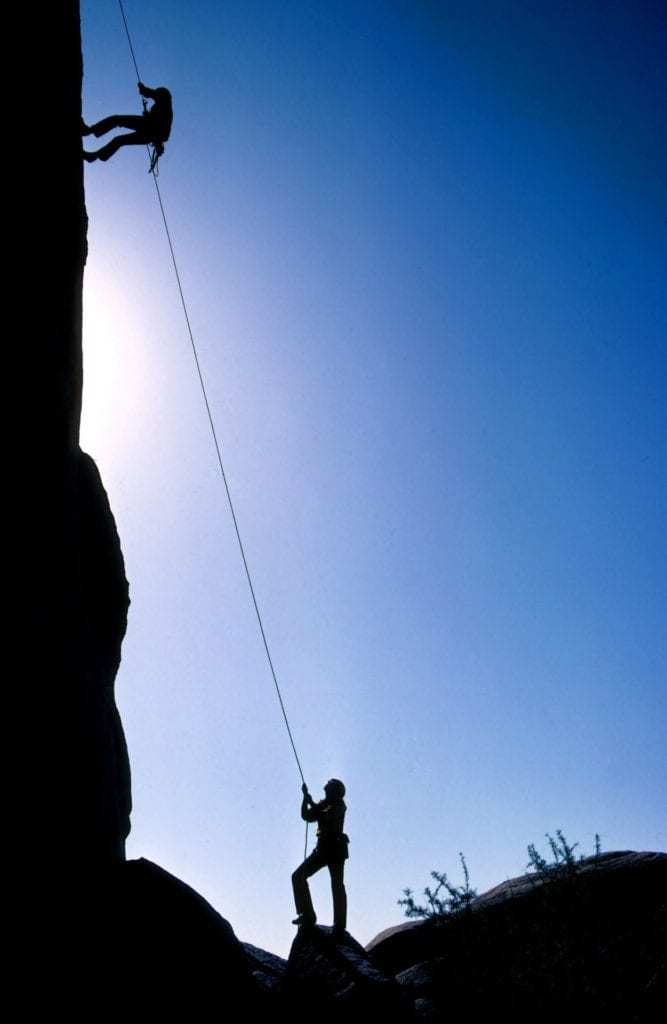
Top rope climbing or top roping is probably one of the safest forms of roped climbing. A type of anchor is created or used at the top of the climb – this could be made from bolts, a tree, or some form of boulder or rock. The rope is fed up to the anchor from the climber and then down to the belayer. This is called “sling shot top roping”. Another form of top roping is called “top belaying” where the belayer is actually at the top of the cliff or climb, most of the time they’d be at the same point as the anchor. In top roping you would have to have access to the top of the cliff or climb, usually without climbing to it. Typically the top of the climb can be reached by hiking or some other easy method so someone can set the anchor for the climbers. The climber should not fall much of a distance if they were to make an error because the belayer and the anchor would be there to protect them.
9. Aid Climbing
Aid climbing is any type of climbing that requires equipment or objects to be used into the rock which will help the climber progress up the wall or rock. The point of aid climbing is for the climber to use this equipment to help assist them up the climb as much as possible without it being used specifically just for safety. Bouldering, highballing, and free-soloing do not require any special equipment such as bolts, rings, or anchors set into the wall and are therefore NOT classed as a type of aid climbing.
10. Free Climbing
Free climbing (also known as free from direct aid climbing) describes any type of climbing that does not use climbing equipment to help the climber progress in their climb; however with free climbing, equipment is allowed purely for safety reasons. Therefore bouldering, sport climbing, free-solo climbing, highballing and trad climbing are all types of free climbing. Free climbing is the opposite of aid climbing.
11. Rope Soloing
Rope soloing (also known as roped solo climbing) is a type of climbing which is done without a partner but a rope is used for protection. Other equipment can be used to aid the climber if they so wish. Therefore rope soloing can either be a type of free climbing or aid climbing.
Rope soloing is similar to free-soloing, however there is a lot less risk involved due to the protection from the rope. There are still a lot more risks involved in this type of climbing than roped climbing involving a partner or a group. For example, if someone who’s rope soloing is in a bad spot or has a potentially life threatening problem, there may not be anyone there to help them.
Although it’s safer than free-soloing, it’s also a lot more annoying than most other types of climbing. This is because a section of the route must be climbed twice due to the fact that you have to add the next belay anchor and then remove the previous one. This means the amount of times you have to climb the same section of each route is at least three.
12. Multi Pitch Climbing
Multi pitch climbing is any form of climbing that has belay stations for the climber to stop at on different areas of the climbing route. It is called “Multi Pitch” because every belay station where a climber can stop is called a “pitch”. Usually, the leader of the group will attach themselves to the belay station and load equipment at each pitch for the climbers below to use if needed.
The purpose of multi pitch climbing is so that each pitch lets other climbers collect equipment such as safety gear while climbing up to the lead climber.
13. Deep Water Soloing
Deep water soloing (also known as deep water climbing or psicobloc) is where the climber uses the water below as the “safety net” in case they fall. Deep water soloing is very similar to bouldering, highballing and free soloing, however it isn’t as dangerous as highballing or free-soloing because the water below should take most of the damage if the climber were to fall. Anyone considering deep water climbing should make sure the water below isn’t shallow and does not have any large rocks underneath that aren’t easily seen with the naked eye – you don’t want to fall from the rock thinking everything is going to be ok and then suddenly kill yourself when you land on an unseen, hidden boulder.
There are a few deep water artificial climbing walls around the world above swimming pools. The commonly used term for deep water soloing in this case is psicobloc climbing. Usually deep water soloing is practiced on sea cliffs above a high tide; however people have done it above rivers and reservoirs as well.
There are many places around the world that have known deep water climbing spots. Deep water soloing is practised in Devon in the UK, Majorca, Calanques in France, Ireland, Sardinia, Spain, Greece, Texas, and other countries/states.
Often, instead of normal chalk from a chalk bag attached to the climber, liquid chalk is used in case of a fall. This is because if a climber falls with a full bag of chalk they’ll lose all of the chalk in the water.
Check out this Deep Water Soloing 101 article I’ve written which covers this topic in detail.
14. Ice Climbing
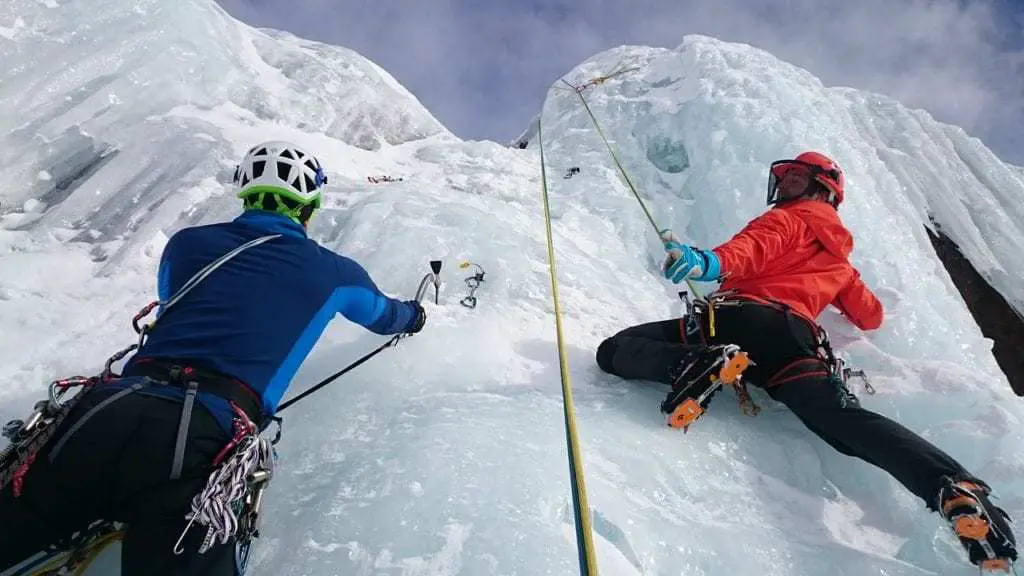
Ice climbing usually uses picks, crampons, ropes and protective gear while the climber climbs frozen water falls, cliffs, frozen slabs and other similar terrains. There are two different types of ice climbing:
- Alpine ice
- Water ice
The reason that these types of ice are considered different is because alpine ice is frozen precipitation and water ice is frozen water flow. Climbing styles on each type of ice varies and the ice climbing grading is separate to both.
Alpine Ice
Alpine ice is found on mountains, usually climbed because the climber wants to reach the summit of a mountain. It is a type of climbing used in mountaineering. Alpine ice is easier to climb than water ice but is usually a longer route than with most water ice areas.
Water Ice
Water is climbed by people looking to test their technique and is usually some form of frozen waterfall or similar.
Ice climbing is also a type of lead climbing which can be done in pairs with a rope where one is an anchor. A climbers’ form of ice pick is used to help the climber advance up the ice, which is why ice climbing is a type of aid climbing. It’s considered an extreme sport and is used in another type of climbing: mountaineering.
Check out this Ice Climbing Article I’ve written which covers this topic in detail.
